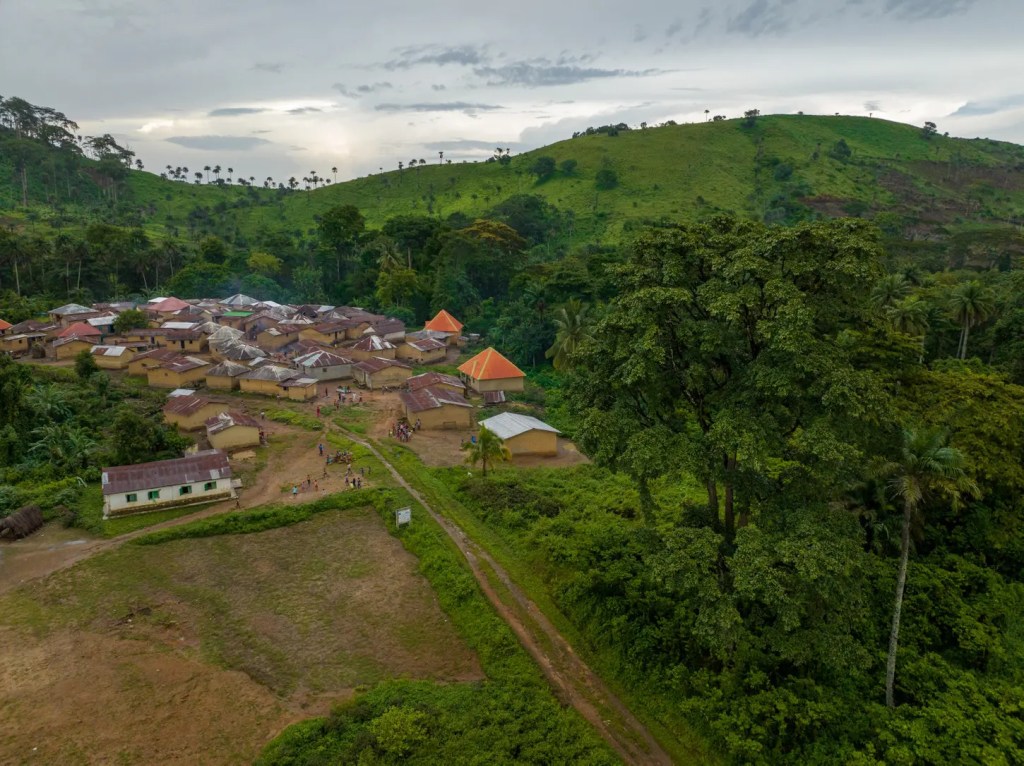
Online Journalism Awards judges were impressed with how ProPublica’s Roots of an Outbreak leveraged academic literature, skillful data analysis, interactive design and an “impressively personal depth of reporting” to explain the complexity of disease outbreaks. The project was a winner in two categories of the 2023 OJAs, the University of Florida Award for Investigative Data Journalism and the 3M Truth in Science Award.
We connected with the team for a closer look at how the award-winning project came together. Here’s what Caroline Chen, Health Reporter; Al Shaw, Senior News Application Developer and Irena Hwang, Data Reporter, had to say.
Coming out of the COVID-19 pandemic lockdowns, ProPublica health reporter Caroline Chen wondered what the world was doing to prevent the next big outbreak. As she started learning about how outbreaks began, she was surprised to come across a paper saying that land-use change was the biggest driver of viruses jumping from animals to humans, an event scientists call spillover. Talking to experts in the field, she found that the science was considered robust, yet she knew that the public didn’t often think of deforestation as a contributor to outbreaks. She wondered whether governments and international health agencies were acting on the science.
She also found a handful of papers that modeled how certain patterns of deforestation might increase the chances of spillover, and thus spark the next devastating pandemic, and wondered if the theoretical work could be applied to the real world, to see which areas of the globe were at the highest risk of spillover.
These questions set us off on a year-long project that spanned three countries, the creation of customized epidemiological models and endless discussions about bats.
“People who work on the environment often are not talking to people who work on health, even though the science is showing that the way we interact with the environment directly affects our health.”
News apps editor Al Shaw and data reporter Irena Hwang dug into the papers and started adapting the theoretical models, using Al’s experience with mapping and satellite image data, and Irena’s engineering background in statistical modeling. Caroline’s shoe leather reporting provided valuable context and gut-checks about the data Al and Irena were working with. For example, our model suggested that the risk of spillover from deforestation was increasing around Meliandou, the village in southern Guinea where the world’s biggest outbreak of Ebola started in 2013. We wondered why dangerous patterns of deforestation were continuing in this region and Caroline’s reporting found that local residents have been forced to keep chipping away at the forests for farmland in order to survive.
The data analysis in turn helped point Caroline towards fresh directions for reporting. Al and Irena created a machine learning model that identified places where deforestation looked concerningly like known outbreak sites, but where Ebola outbreaks due to spillover had never been recorded (this pair of stories was published after the ONA award was announced). Caroline would never have thought of reporting on Nigeria’s outbreak preparedness, if not for the machine learning model’s findings.
Explore more OJA-winning work: How Deforestation Inc exposed misleading “green” labels for furniture makers and other forestry products
It was daunting to work with tools from academic science in the newsroom, and more than once we wondered if our results would be worth the effort. So it was really reassuring when one of the researchers who created the model we adapted told us that our analysis is exactly what they would have liked to do, had they more time. This series showed us that journalism can actually add to and elevate academic work, while also making it more accessible and vivid for the general public.
Our series found that governments and international public health agencies are neglecting to address the root causes of pandemics, remaining more reactionary than truly investing in prevention. Journalists should continue to track how funds set up to prevent the next pandemic are being spent.
We also found in our reporting that there are gaps and silos in both the policy-making world and among funders: people who work on the environment often are not talking to people who work on health, even though the science is showing that the way we interact with the environment directly affects our health. Journalists, too, should watch out for stories they could miss if they adhere too rigidly to narrow beats. For example, when Caroline first heard about the nonprofit Health in Harmony, she thought it wouldn’t fit her coverage because she’s a health reporter and doesn’t write about trees. It turned out that the nonprofit’s unique strategy of preserving rainforests by offering residents discounted health care in exchange for stopping logging was a perfect example to show the world that spillover prevention is, in fact, possible.
On the topic of public health, Irena has always been a huge fan of News You Can Use, and loved the New York Times’ recent health interactive, Am I Still Contagious?
Al was recently inspired by the recent New York Times groundwater investigation and Le Monde’s interactive investigation into PFAS in Europe.
Launched in 2000, the Online Journalism Awards are the only comprehensive set of journalism prizes honoring excellence and innovation in digital journalism around the world. The call for entries for the 2024 awards is open April 4–May 9.
Explore the 2023 winners and finalists Volunteer with the OJAsThe Online Journalism Awards™ (OJAs), launched in May 2000, are the only comprehensive set of journalism prizes honoring excellence in digital journalism around the world.

Posted By
Karolle Rabarison
Categories
Stories